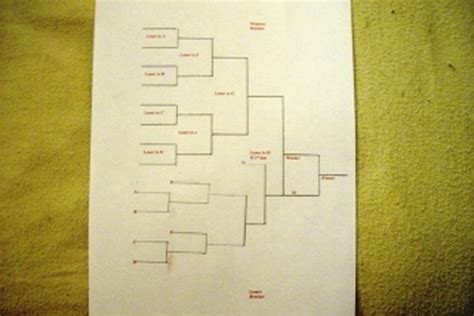How To Run A Pool Competition
Ronan Farrow
Apr 02, 2025 · 3 min read

Table of Contents
How to Run a Successful Pool Competition
Running a successful pool competition involves more than just setting up a table and inviting people. It requires careful planning and execution to ensure a fun, fair, and memorable event for all participants. This guide will walk you through the essential steps, from initial planning to post-competition wrap-up.
Pre-Competition Planning: Laying the Foundation
Before you even think about cue sticks, you need a solid plan. This stage is crucial for a smoothly run event.
1. Define Your Competition:
- Type of Tournament: Will it be a single-elimination bracket, a round-robin format, or something more complex like a double-elimination tournament? Consider your player base and available time when making this decision. Single elimination is quicker, while round-robin allows for more games.
- Skill Level: Will this be open to all skill levels, or will you have separate brackets for beginners, intermediate, and advanced players? Categorizing players ensures fair competition and prevents frustration.
- Number of Players: Determine the maximum number of participants you can comfortably accommodate based on your venue, tables, and time constraints.
- Prizes: What will the winners receive? Prizes can range from trophies and bragging rights to gift certificates or cash prizes. Consider offering smaller prizes for participation or other milestones to boost morale.
2. Secure Your Venue and Resources:
- Location: Choose a venue with enough space for pool tables, spectators, and any additional activities you might plan. Consider accessibility, parking, and overall ambiance.
- Tables: Ensure you have enough properly maintained pool tables for the number of players. Consider table quality and consistency across tables.
- Equipment: Gather all necessary equipment: cue sticks (extra ones are always a good idea), balls, racks, chalk, and table brushes. Check that everything is in good working order beforehand.
- Registration: Decide how players will register (online forms, in-person signup). Have a clear registration process and collect necessary information.
Competition Day: Execution is Key
The day of the competition is all about smooth execution. Proper organization here minimizes delays and ensures a positive experience.
1. Set the Stage:
- Table Setup: Arrange the tables strategically to maximize space and minimize congestion. Ensure adequate lighting and clear viewing areas for spectators.
- Registration Desk: Have a designated area for late registrations, questions, and prize distribution.
- Rules and Schedule: Display the tournament rules and schedule prominently. This ensures everyone is aware of the format and timings.
- Referees/Judges: If you anticipate any disputes, have designated referees to ensure fair play and resolve any disagreements.
2. Running the Tournament:
- Clear Communication: Keep players informed about schedules, pairings, and any changes throughout the tournament. Announce matches clearly and timely.
- Fair Play: Enforce the rules consistently and fairly. Address any disputes quickly and decisively.
- Time Management: Stick to the schedule as closely as possible to keep the competition moving at a good pace. Have contingency plans for unexpected delays.
- Spectator Management: Control spectator flow to minimize disruption during matches.
Post-Competition Wrap-Up: Leave a Lasting Impression
Even after the last ball drops, there are important steps to ensure the success of your competition.
1. Prize Distribution:
- Ceremony: Hold a brief award ceremony to recognize the winners and participants. This is a great way to celebrate achievements and boost morale.
- Photos: Take photos of the winners and participants to document the event and share on social media.
2. Feedback and Improvement:
- Gather Feedback: Collect feedback from participants and spectators to identify areas for improvement in future competitions.
- Analyze Results: Review the tournament's flow and identify areas that worked well and areas that need refinement.
By following these steps, you can create a pool competition that is not only fun and exciting but also well-organized and memorable for all involved. Remember, good planning and execution are the keys to a successful event!
Featured Posts
Also read the following articles
| Article Title | Date |
|---|---|
| How To Tell If Your Oil Pump Is Going Bad | Apr 02, 2025 |
| How To Set Up A Rotary Tattoo Machine | Apr 02, 2025 |
| How To Style Sparkly Boots | Apr 02, 2025 |
| How To Test If Battery Cables Are Bad | Apr 02, 2025 |
| How To Study For Pediatric Boards | Apr 02, 2025 |
Latest Posts
-
How Can I Meet The Dalai Lama
Apr 03, 2025
-
How Can I Make My Wife Want Me
Apr 03, 2025
-
How Can I Make My Exercise Bike Seat More Comfortable
Apr 03, 2025
-
How Can I Keep From Singing Lyrics Pdf
Apr 03, 2025
-
How Can I Keep From Singing Gilpin
Apr 03, 2025
Thank you for visiting our website which covers about How To Run A Pool Competition . We hope the information provided has been useful to you. Feel free to contact us if you have any questions or need further assistance. See you next time and don't miss to bookmark.
